 W
WAgnes Randolph, Countess of Dunbar and March, known as Black Agnes for her dark complexion, was the wife of Patrick, 9th Earl of Dunbar and March. She is buried in the vault near Mordington House.
 W
WAlasdair Óg Mac Domhnaill was Lord of Islay and chief of Clann Domhnaill. He was the eldest son of Aonghus Mór mac Domhnaill, Lord of Islay. Alasdair Óg seems to first appear on record in 1264, when he was held as a hostage of the Scottish Crown for his father's good behaviour. During Alasdair Óg's career, the Scottish realm endured a succession crisis as a result of the unexpected death of Margaret, Maid of Norway, heir to the Scottish throne, in 1290. One of several factions that staked a claim to the throne was the Bruce kindred. Both Alasdair Óg and his father were cosignatories of the Turnberry Band, a pact that may have partly concerned the Bruces' royal aspirations.
 W
WAlexander III was King of Scots from 1249 until his death. He concluded the Treaty of Perth, by which Scotland acquired sovereignty over the Western Isles and the Isle of Man. His heir, Margaret, Maid of Norway, died before she could be crowned.
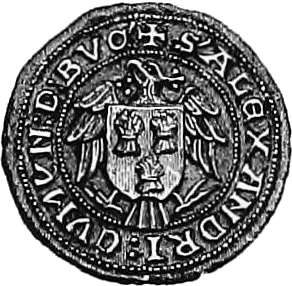 W
WAlexander Comyn, Sheriff of Aberdeen was a fourteenth-century Scottish nobleman. He was a younger son of Alexander Comyn, Earl of Buchan. The latter died in 1290, whereupon the earldom of Buchan was inherited by Alexander's elder brother, John.
 W
WAlexander of Argyll, also known as Alexander of Lorne, and Alexander MacDougall, was a Scottish magnate from the late 13th and early 14th century.
 W
WAonghus Óg Mac Domhnaill, or Angus Og MacDonald, was a fourteenth-century Scottish magnate and chief of Clann Domhnaill. He was a younger son of Aonghus Mór mac Domhnaill, Lord of Islay. After the latter's apparent death, the chiefship of the kindred was assumed by Aonghus Óg's elder brother, Alasdair Óg Mac Domhnaill.
 W
WJohn Balliol, known derisively as Toom Tabard, was King of Scots from 1292 to 1296. Little is known of his early life. After the death of Margaret, Maid of Norway, Scotland entered an interregnum during which several competitors for the Crown of Scotland put forward claims. Balliol was chosen from among them as the new King of Scotland by a group of selected noblemen headed by King Edward I of England.
 W
WSir William Bisset was a knight, sheriff and constable in the 13th and 14th centuries.
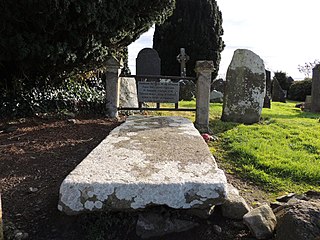 W
WEdward Bruce, Earl of Carrick, was a younger brother of Robert the Bruce, King of Scots. He supported his brother in the 1306-1314 struggle for the Scottish crown, then pursued his own claims in Ireland. Proclaimed High King of Ireland in 1315 and crowned in 1316, he was eventually defeated and killed by Anglo-Irish forces of the Lordship of Ireland at the Battle of Faughart in County Louth.
 W
WElizabeth de Burgh was the second wife and the only queen consort of King Robert the Bruce. Elizabeth was born sometime around 1284, probably in Down or Antrim in Ireland. She was the daughter of one of the most powerful Irish nobles of the period, Richard Óg de Burgh, 2nd Earl of Ulster, who was a close friend and ally of Edward I of England.
 W
WHenry le Chen [le Cheyn, le Chein, Cheyne, de Chene] was a late 13th-century and early 14th-century Scoto-Norman bishop. Hector Boece claims that he was the nephew of John III Comyn, Lord of Badenoch, but no contemporary evidence supports this. Cheyne belonged to a family with Norman roots which was well established in the northeast of Scotland, holding significant amounts of territory on the boundaries of the Earldom of Buchan.
 W
WChristina of the Isles was a fourteenth-century Scottish noblewoman. She was daughter of Ailéan mac Ruaidhrí, and a leading member of Clann Ruaidhrí. Although Ailéan had two sons, Lachlann and Ruaidhrí, both appear to have been illegitimate, whereas Christina was legitimate, and possibly a daughter of Ailéan's wife, Isabella.
 W
WJohn Comyn II of Badenoch, nicknamed the Black Comyn, was a Scottish nobleman, a Guardian of Scotland, and one of the six Regents for Margaret, Maid of Norway. His father was John Comyn I of Badenoch.
 W
WSir Reginald Crawford was a Scottish knight who took part in the Wars of Scottish Independence.
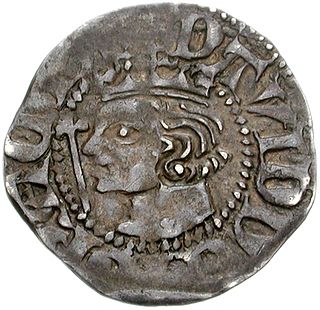 W
WDavid II was King of Scotland for nearly 42 years, from 1329 until his death in 1371. He was the last male of the House of Bruce. Although David spent long periods in exile or captivity, he managed to ensure the survival of his kingdom and left the Scottish monarchy in a strong position.
 W
WSir James Douglas was a Scottish knight and feudal lord. He was one of the chief commanders during the Wars of Scottish Independence.
 W
WSir John de Fenton was a 14th-century Scottish noble.
 W
WSir William de Fenton, Lord of Baikie and Beaufort, was a 13th-14th century Scottish noble.
 W
WSir Simon Fraser of Oliver and Neidpath was a Scottish knight who fought in the Wars of Scottish Independence, for which he was hanged, drawn, and quartered in 1306.
 W
WSir Gilbert de la Hay, fifth feudal baron of Errol in Gowrie, was Lord High Constable of Scotland from 1309.
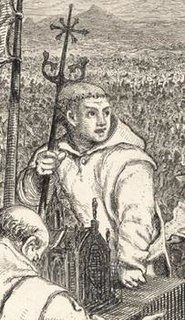 W
WWilliam de Lamberton, sometimes modernized as William Lamberton, was Bishop of St Andrews from 1297 until his death. Lamberton is renowned for his influential role during the Scottish Wars of Independence. He campaigned for the national cause under William Wallace and later Robert the Bruce. As Bishop of St Andrews, the most powerful seat in Scotland, Bishop Lamberton along with Bishop Robert Wishart of Glasgow conducted the coronation of Robert the Bruce as King Robert I. Lamberton would go on to have a vital role in the formulation of the Declaration of the Clergy 1310 and the Declaration of Arbroath which would lead to Scottish Independence.
 W
WSir Robert de Lawedre (Lauder), Knt., of Quarrelwood, Edrington, and the Bass was Justiciar of Scotia, a Scottish soldier of great prominence and Captain of Urquhart Castle. He is recorded by Fordun, in his Scotichronicon, and in Extracta ex variis Cronicis Scocie as "Robertus de Lavedir 'the good'"
 W
WSir Alexander Lindsay, Lord of Barnweill, Byres and Crawford, also known as Alexander de Lindsay, was a Scottish noble.
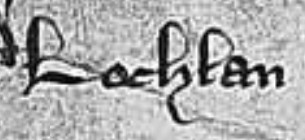 W
WLachlann Mac Ruaidhrí was a Scottish magnate and chief of Clann Ruaidhrí. He was a free-booting participant in the First War of Scottish Independence, who remarkably took up arms against figures such as John, King of Scotland; Edward I, King of England; the Guardians of Scotland; and his near-rival William II, Earl of Ross. Lachlann disappears from record in 1307/1308, and appears to have been succeeded by his brother, Ruaidhrí, as chief of Clann Ruaidhrí.
 W
WEóin Mac Suibhne was a fourteenth-century Scottish nobleman and a leading member of Clann Suibhne. In the middle of the thirteenth century, seemingly during the 1260s, Eóin's family appears to have been ejected from its homeland in Argyll by the Stewart/Menteith kindred. It may have been during this period that members of Clann Suibhne took up residence in Ireland.
 W
WDomhnall I Earl of Mar - Domhnall mac Uilleim - was the seventh known Mormaer of Mar, or Earl of Mar ruling from the death of his father, Uilleam of Mar, in 1276 until his own death somewhere between 1297 and 1302. Excluding Gille Christ he is counted as sixth Mormaer or Earl of Mar.
 W
WSir Eustace de Maxwell, Lord of Caerlaverock, was a prominent 14th-century Scottish noble.
 W
WSir John Menteith of Ruskie and Knapdale was a Scottish nobleman during the Wars of Scottish Independence. He is known for his capture of Sir William Wallace in 1305 and later joined with King Robert I of Scotland and received large land grants in Knapdale and Kintyre for his service. He is described as "guardian" of the Earldom of Menteith, as his great-nephew Alan II, Earl of Menteith was a minor at the time of the death of Alan I, Earl of Menteith.
 W
WSir William de Monte Alto of Ferne, also known as William de Mohaut (d.1327) was a 13th-14th century Scottish noble.
 W
WSir Andrew de Rait of Rait was a 13th-14th century Scottish noble. Andrew de Rait was the younger brother of Gervase de Rait, Constable of Invernairn. Andrew was Constable of Nairn Castle in 1296. He appears on the 1296 Ragman Roll giving homage to King Edward I of England. He succeeded to his brother's estates and titles in 1297.
 W
WRobert II was King of Scots from 1371 to his death in 1390. He was the first monarch of the House of Stewart as the son of Walter Stewart, 6th High Steward of Scotland, and of Marjorie Bruce, daughter of the Scottish king Robert the Bruce by his first wife Isabella of Mar.
 W
WRobert I, popularly known as Robert the Bruce, was King of Scots from 1306 to his death in 1329. Robert was one of the most famous warriors of his generation and eventually led Scotland during the First War of Scottish Independence against England. He fought successfully during his reign to regain Scotland's place as an independent country and is now revered in Scotland as a national hero.
 W
WRichard Siward, Lord of Kellie, was a 13th-14th century Scottish noble. He was the son of the English adventurer Richard Siward and his wife, the wealthy heiress and widow Philippa Basset countess of Warwick, who had married in 1230. His parents divorced in 1242 and young Richard remained in the custody of his father by the terms of the settlement. The Siwards moved north to Scotland after this, where King Alexander II offered the elder Richard a place in his household and gifts of land in Fife, including Kellie and lands in Aberdour. On his death in 1248 the young Richard remained in Scotland, presumably as a royal ward. He inherited no share of his mother's lands.
 W
WSir John de Soules was Guardian of Scotland from 1301 to 1304, at a crucial period in the Wars of Scottish Independence. He was a prominent member of the de Soules family.
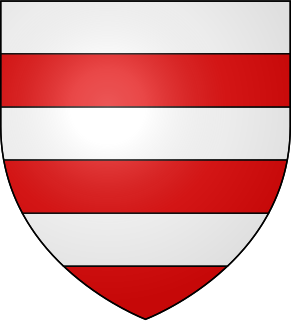 W
WWilliam II de Soules, Lord of Liddesdale and Butler of Scotland, was a Scottish Border noble during the Wars of Scottish Independence. William was the elder son of Nicholas II de Soules, Lord of Liddesdale and Butler of Scotland, and a cousin of Alexander Comyn, Earl of Buchan. He was the nephew of John de Soules, Guardian of Scotland.
 W
WSir Henry St Clair was a 13th-14th century Scottish noble, who was the 7th Baron of Roslin and Lord of Catcune.
 W
WMalise IV of Strathearn was a Scottish nobleman, the seventh known ruler of Strathearn. He was an ardent supporter of King Robert the Bruce, in contrast to his father, Malise III, who sided with Edward I of England.
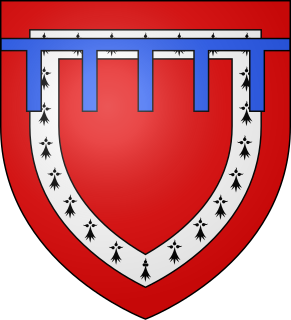 W
WSir Ingram de Umfraville was a Scottish noble who played a particularly chequered role in the Wars of Scottish Independence, changing sides between England and Scotland multiple times, throughout the conflict.
 W
WSir William Wallace was a Scottish knight who became one of the main leaders during the First War of Scottish Independence.
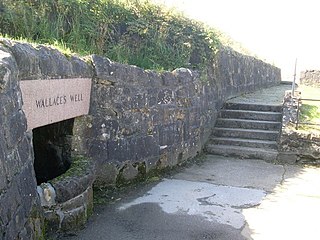 W
WWallace's Well or Auchinleck Well is a historic well which in present times is a monument and tourist attraction, located on Langmuirhead Road near Robroyston in the City of Glasgow, Scotland. William Wallace is said to have drunk from the well whenever he visited the area and also just before his capture by English troops commanded by Sir John Mentieth.
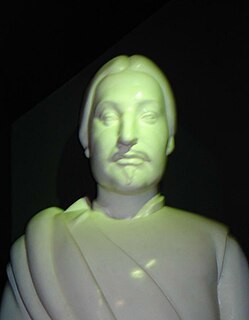 W
WWilliam II, Earl of Ross was ruler of the province of Ross in northern Scotland, and a prominent figure in the Wars of Scottish Independence.
 W
WRobert Wishart was Bishop of Glasgow during the Wars of Scottish Independence and a leading supporter of Sir William Wallace and King Robert Bruce. For Wishart and many of his fellow churchmen, the freedom of Scotland and the freedom of the Scottish church were one and the same thing. His support for the national cause was to be of crucial importance at some critical times.